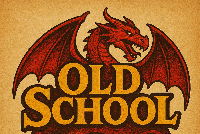Hey there Matt, Good luck with your session tomorrow! I started my first campaign with Roll20 back in April, and here were a few things I learned: (1) I preferred Google hangouts over using the native Roll20 environment - it seems less laggy. (2) Certain times of day (nights more than days) are busier on Roll20 than others as the server slows a bit. (3) On every page in your campaign, be sure to click on the gear and 'view page as a player'. This ensures you haven't set light to darkness or that you have fog of war preventing them from seeing anything. (4) Don't forget to use the Journal functions to define your players. Then assign your player icons to those characters, Then give one of your players the task of keying in the initiatives for all the other players. They can key that in while you key in monster initiatives. It also gives them the power to move their own icons. (5) Only after you complete step 4, for each page of your map, copy and paste your player icons on every map page.This way they are already pre-loaded and you don't have to do it later. (6) If you are using map pages to display portraits - things the players are seeing, like monsters - don't forget to turn off the grid so the picture looks cleaner. (7) I would strongly recommend you try to have each of your players log in in advance of your Monday night game. Most of my players were required to create a login with Roll20.net before playing, which slowed things down. By having them log in in advance, it helps a lot. (8) Make sure all your players are using headset speakers. If they leave it open mike, you often get annoying infinite echoes. Make sure they turn off all background sound - music, television, etc. (9) Holding down the mouse button causes a circle to appear and 'ping' the map. Holding down SHIFT and the mouse button causes all your player maps to shift to the same spot you are AND pings that spot. Very handy for getting them on the same spot. Good luck!








